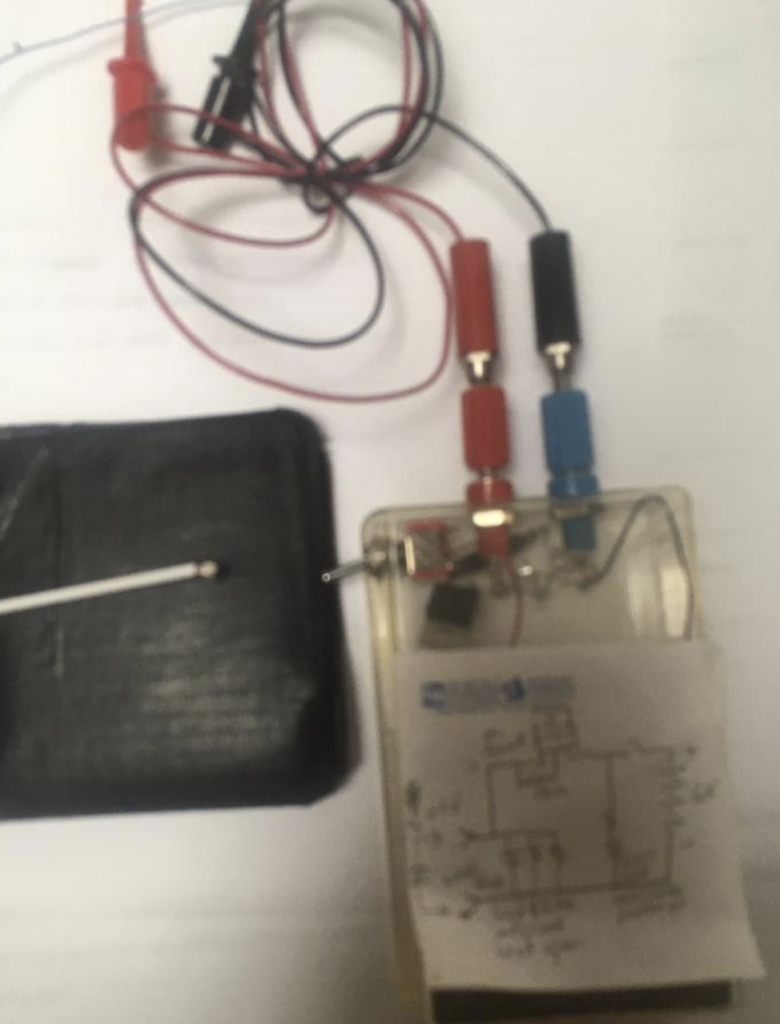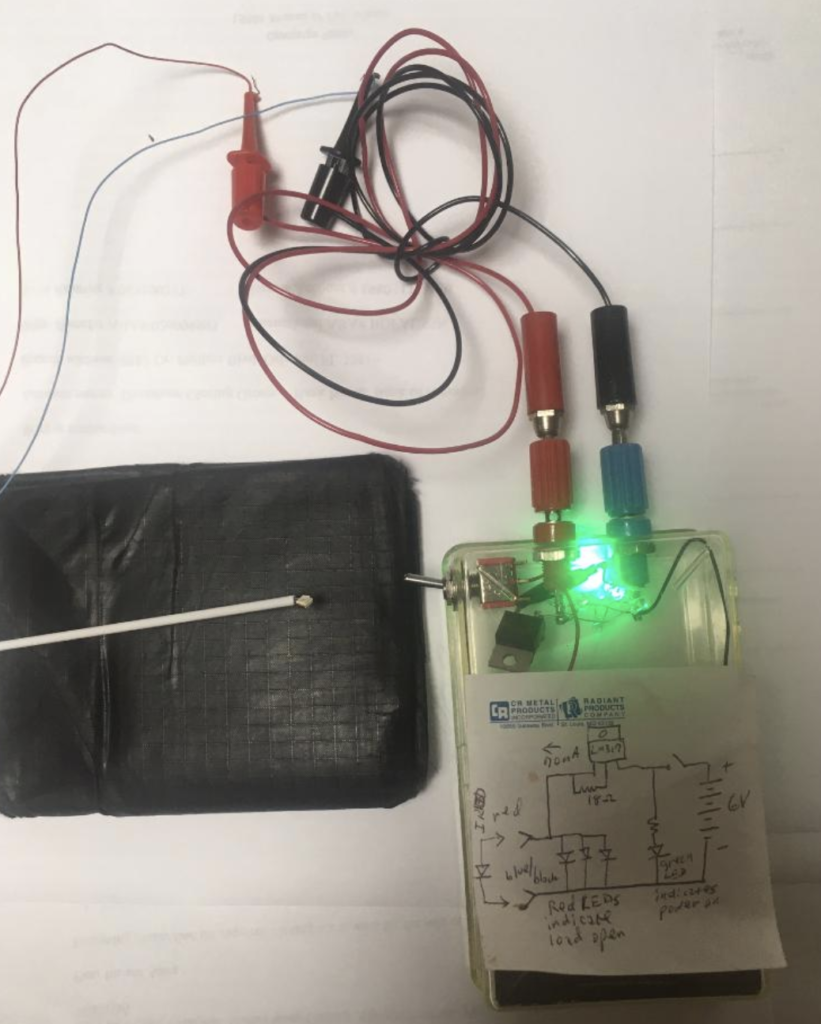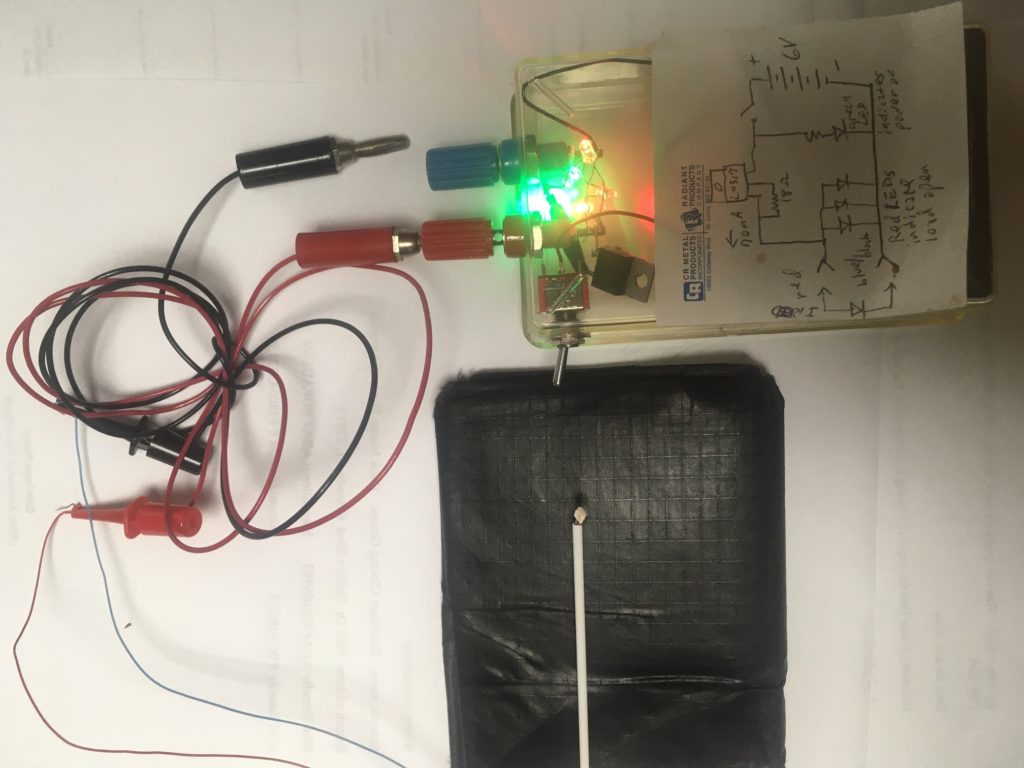The use of different wavelengths of light provided by small diodes combined with Self-Administration of Sphenopalatine Ganglion Blocks can have an additive effect. Below are pictures from 2015 for my working prototype of a light neuromodulator unit to be utilized in conjunction with Cotton-Tipped Catheters and Continual Capillary Feed of 2% lidocaine to enhance the effects on the Sphenopalatine Ganglion.
The idea is to ultimately create a product that physicians can utilize in their offices with patients to evaluate appropriate size and length of the device. The lengths can also be varied for patient comfort. They can the prescribe either a prescription or possibly OTC product to the patients.
I have been teaching patients to Self-Administer Sphenopalatine Ganglion Blocks (SASPGB) since 1986. The SPHENOPALATINE GANGLION is also known as the PTERYGOPALATINE GANGLION, SLUDER’S GANGLION, MECKEL’S GANGLION, THE NASAL GANGLION or just the SPG.
The SPG is the largest Parasympathetic ganglion of the head and it also contains somatosensory nerves and sympathetic nerves from the cervical sympathetic chain and specifically from the Stellate Ganglion. SPG Blocks are extremely effective for treatment of migraines, cluster headaches, chronic daily headaches as well as stress related disorders and anxiety and panic attacks.
Learn more in Dr Shapira’s Cranio article: https://www.ncbi.nlm.nih.gov/pubmed/30973097
Cranio. 2019 May;37(3):201-206. doi: 10.1080/08869634.2019.1592807.
Neuromuscular dentistry and the role of the autonomic nervous system: Sphenopalatine ganglion blocks and neuromodulation. An International College of Cranio Mandibular Orthopedics (ICCMO) position paper.
Self-Administration of SPG Blocks (SASPGB) is extremely patient friendly and can help patients avoid multiple visits to the Emergency Room or physicians offices. The Block has been called the Miracle Block probable related to the book “Miracles on Park Avenue” by Albert Benjamin Gerber who detailed the medical practice of Dr Milton Reder an octogenerian otolaryngologist in Manhattan. It details how patients came from across the world to be treated by Dr Reder for a wide variety of “incurable” disorders. The only treatments he used were repetitive administration of Sphenopalatine Ganglion Blocks. He would have patients come 1-2 times daily for multiple visits to achieve his results.
Dr Hiram Byrd in 1930 wrote a paper in the Annals of Internal Medicine (now JAMA) on “Sphenopalatine Phenomena” where he detailed the postivie effects of 10,000 blocks on 2000 patients with virtually no negative side effects.
More recently trans-nasal catheters have been approved by the FDA to administer SPG Blocks. The Sphenocath, the Allevio and the TX360 are the current devices. They are all basically well designed “squirt guns” for delivering anesthetic to the mucosa overlying the ptergopalatine fossa where the Sphenopalatine Ganglion resides along with the maxillary division of the trigeminal nerve where it leaves the cranium thru the foramen rotunda.
Ideally, the physician or dentist can then prescribe devices to deliver the block with a choice of diodes with different wavelength of light.
It is also possible to add a small vibrational unit to the device and the frequency of vibrations can also be adjusted. The vibrations will enhance the absorption of lidocaine and have an independent effect as well on the tissues.
The design could also allow the instrument to function as an electrode to the Sphenopalatine Ganglion. It has been added to an Ultra-high Frequency Neurotransmitter modulation unit that is no long available the GL112 Pain Suppressor. There is a newer units available of a similar design that I will test in the near future.
This prototype is extremely large and has an outside power supply to test proof of concept and was successfully utilized on a patient as a preliminary case study.
The use of ultra-low frequency TENS /Neuromodulation does appear to have an additive effect to the Sphenopalatine Ganglion Block. The unit I use is commercially available and FDA Approved. The BNS 40 by Myotronics. It has been utilized in conjunction with Self-administered SPG Blocks and appears to have an additive effect. The BNS 40 is a portable version of the Myomonitor invented by Dr Barney Jankelson and made by Myotronics. This device has been is use for over 50 years.
Doing the proper research will require numerous subjects and double blind studies. Combination treatment will increase the complications of doing these studdies.
A compact design without external power s relatively easy to manufacture for single time use. It is also possible to have an outside controller that can supply power to diodes, electric stimulation. and/or vibration.
Orininally, I planned on self funding research and applying for patents but at this time I would rather open it up to the public and possibly consider using a funding site to get public participation.
There are companies who are looking at using invasive techniques to implant neuromodulation devices.


